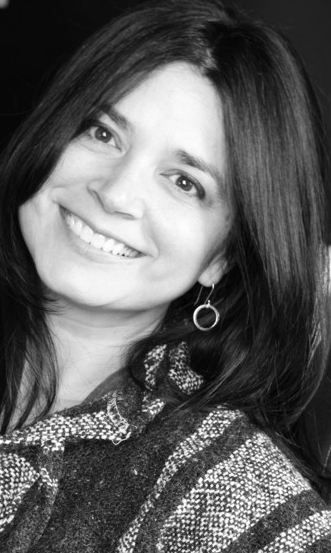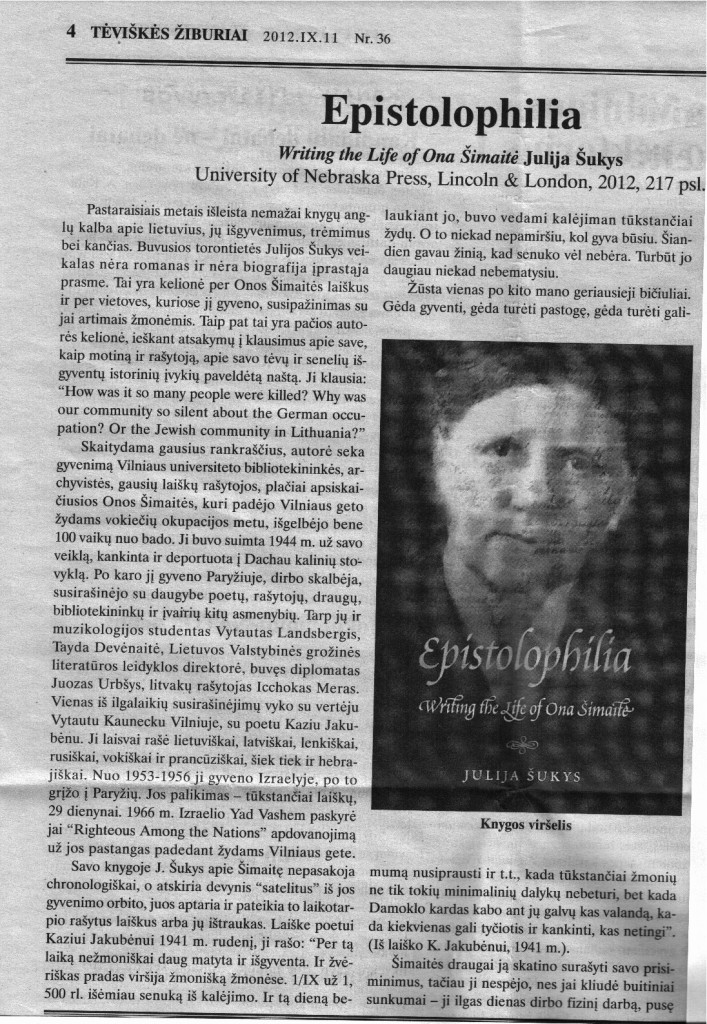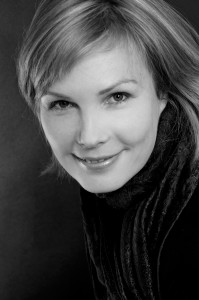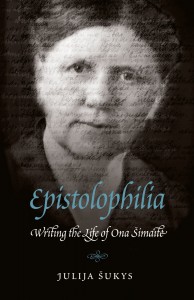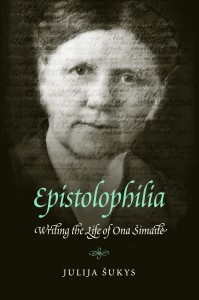Thanks to the Canadian Jewish News and Ania Bessonov for this careful reading of my new book, Siberian Exile.
Siberian Exile: Blood, War, and a Granddaughter’s Reckoning
NOW AVAILABLE!
“Interweaving coincidences and reversals with historical precision in a narrative that layers, folds, zags and spikes, Julija Šukys wanders the ghost-filled streets of the present, mingling with kin, real and imagined, and corresponding with multiple unspeakable pasts. I can’t recall the last time I read so gripping and so delicate a documentary of atrocity, complicity, dispossession and survival. Siberian Exile is remarkable, daunting, and disarmingly real.” — Mary Cappello, author of Life Breaks In: A Mood Almanack
“All families harbor secrets. What if, in blithe innocence, you set out to research your family history, only to discover that your grandfather was guilty of the most heinous of crimes? Šukys pursues her tragic family memoir with courage and self-examination, often propelled to her painful discoveries by what she believes is a bizarre synchronicity. This is not a book written at a safe distance.”—Rosemary Sullivan, author of Stalin’s Daughter: The Extraordinary and Tumultuous Life of Svetlana Alliluyeva
“Riveting. . . . Beyond the historical and familial narrative, Julija Šukys ponders her own exile and her own complicity, allowing readers to do the same, comparing versions of selves and asking which version is truest, an impossible question, but one readers will find as enthralling as these pages.”—Patrick Madden, author of Sublime Physick and Quotidiana
BUY Siberian Exile at the University of Nebraska Press.
BUY Siberian Exile at IndieBound.
About the Book
When Julija Šukys was a child, her paternal grandfather, Anthony, rarely smiled, and her grandmother, Ona, spoke only in her native Lithuanian. But they still taught Šukys her family’s story: that of a proud people forced from their homeland when the soldiers came. In mid-June 1941, three Red Army soldiers arrested Ona, forced her onto a cattle car, and sent her east to Siberia, where she spent seventeen years separated from her children and husband, working on a collective farm. The family story maintained that it was all a mistake. Anthony, whose name was on Stalin’s list of enemies of the people, was accused of being a known and decorated anti-Bolshevik and Lithuanian nationalist.
Some seventy years after these events, Šukys sat down to write about her grandparents and their survival of a twenty-five-year forced separation and subsequent reunion. Piecing the story together from letters, oral histories, audio recordings, and KGB documents, her research soon revealed a Holocaust-era secret—a family connection to the killing of seven hundred Jews in a small Lithuanian border town. According to KGB documents, the man in charge when those massacres took place was Anthony, Ona’s husband.
In Siberian Exile Šukys weaves together the two narratives: the story of Ona, noble exile and innocent victim, and that of Anthony, accused war criminal. She examines the stories that communities tell themselves and considers what happens when the stories we’ve been told all our lives suddenly and irrevocably change, and how forgiveness or grace operate across generations and across the barriers of life and death.
BUY Siberian Exile at the University of Nebraska Press.
On Portraiture in CNF: A Report From the Seminar Room
“The most difficult thing for me is a portrait. You have to try and put your camera between the skin of a person and his shirt.” — Henri Cartier-Bresson
“Every portrait that is painted with feeling is a portrait of the artist, not of the sitter.” — Oscar Wilde
It’s a snow day in Missouri, so I’m taking a few moments to return to the blog and share some impressions from the new semester. This time around, my grad students and I are contemplating and soon will be trying to produce effective portraits in creative nonfiction. Questions we’re asking of texts (ours and others’) include:
How does an author paint a compelling and true portrait of a person in words? What are the elements that make a portrait come alive? What are the pitfalls? Why do some of our attempts fall flat and produce lifeless caricatures rather than the intimate, complex, and nuanced texts we aim for? How do we deal with what we don’t and can’t know about our subject? What should or might the relationship between author and subject look like?
And in addition to writing flash portraits and full-length pieces for workshop, we’ll be reading Gertrude Stein’s Autobiography of Alice B. Toklas, Dave Eggers’ What is the What, Ryszard Kapuscinski’s The Emperor and more. It’s all big stuff: long, hefty books. Perhaps not the best way to set our terms.
Our first order of business (yesterday) was to see what we could glean from small portraits and to begin assembling a set of hypotheses about how successful portraits work in CNF. I asked each of my students to choose an excerpt (or entire portrait) that could be read in under 5 minutes and to come to class prepared to defend the selection in what I called “The Battle of the Shortcuts.” After each reading, we pinpointed what we thought the text was doing successfully, and I filled the whiteboard with our ideas. This was the result:
Contenders included portraits by: Thom Gunn, Salman Rushdie, Sara Suleri, Mark Jenkins, Lynda Barry, Eula Biss, Mike Latcher, and Jeff Sharlet.
A vote determined the “best” choice (the battle, of course, was simply a device to frame and motivate our conversation). The winning student, whose portrait the group selected, got a coffee card to a café on campus.
Contrary to my predictions, we needed no second or third ballots to determine the victor. Michele Morano’s essay, “In the Subjunctive Mood” from Grammar Lessons handily won in the first round for its use of filters, frames, and the second-person voice to render the unbearable bearable. (I know this essay is available online somewhere, legally, but I can’t find it. If you come across the link, please send it my way so I can share it!)
There are more fun and games are to come, since I’ve decided to use my imagination and stretch the bounds of the usually staid and serious format that is the writing workshop. I’ll try to share more reports from the seminar room as we progress.
If you’re also leading CNF workshops and want to share some ideas, do chime in and let me know what you’re up to.
Here’s to a day of catching up with writing and editing and the drinking of tea. Stay safe!
[Photos: Paulgi and Eric Scott]
CNF Conversations: An Interview with Joy Castro
Joy Castro, ed. Family Trouble. University of Nebraska Press, 2013.
Joy Castro http://www.joycastro.com is the author of the memoir The Truth Book (Arcade, 2005) and the New Orleans literary thrillers Hell or High Water (St. Martin’s, 2012) and Nearer Home (St. Martin’s, 2013). Her essay collection Island of Bones (U of Nebraska, 2012) is a PEN Finalist and the winner of an International Latino Book Award. Her work has appeared in Fourth Genre, Seneca Review, Brevity, North American Review, and The New York Times Magazine. An associate professor at the University of Nebraska-Lincoln, she teaches literature, creative writing, and Latino studies.
Essays by twenty-five memoirists explore the fraught territory of family history, analyzing the ethical dilemmas of writing about family and offering practical strategies for navigating this tricky but necessary material. A sustained and eminently readable lesson in the craft of memoir, Family Trouble serves as a practical guide for writers who want to narrate their own versions of the truth while still acknowledging family boundaries.
The 25 distinguished, award-winning memoirists who contributed to Family Trouble come from a wide array of cultural backgrounds and family configurations. They include college and university educators, many of whom have published craft texts.
The contributors, with links to their author websites, are listed here: http://www.joycastro.com/FamilyTrouble.htm.
Julija Šukys: Joy, I’m so happy to have the opportunity to discuss your recent edited anthology, Family Trouble. I myself am working on a project that tells the story of my family’s history, and I’m grateful for the chance to have a conversation with you about it here and with the authors whose works you gathered via the pages of your book.
Tell me a bit about yourself. What is your writing background, and how did you come to want to put together this collection about the challenges of writing about family? How did you find the contributors to this book, who are many and varied?
Joy Castro: First of all, thank you so much for your interest in this book. I’m grateful. I hope Family Trouble will help many writers, aspiring writers, and teachers of writing as they think through these tricky issues.
I’ve published two books of memoir, The Truth Book (2005) and Island of Bones (2012), both from University of Nebraska Press, which also brought out Family Trouble. I’m also a writer of literary thrillers: Hell or High Water (2012) and Nearer Home, both set in New Orleans and both from St. Martin’s Press, and they’ve been optioned for film or television. I publish essays, short fiction, and poetry. At the University of Nebraska-Lincoln, I teach fiction and creative nonfiction in the graduate program.
The idea for this particular collection began to grow when I was touring with The Truth Book. After I read, audiences always wanted to know how my family felt about the revelations it contained. That surprised me. I knew how carefully I’d thought through those issues of respect, privacy, and artistic license, but I hadn’t realized that anyone else would be interested.
At the AWP conference in 2008, I coordinated a panel on the topic—mostly due to my own curiosity, and so that I could hear what the other four panelists thought about it. I thought 20 or 30 people might show up. But over 400 came. I knew then that I’d stumbled onto something that was an issue of real urgency for many people, so I decided to try gathering a collection of diverse views on the topic.
A few of the contributors were memoirists I knew personally whose work I admired. Others were writers whose work alone I knew and admired, and I e-mailed them with an invitation to contribute. A very few, like Paul Lisicky and Susan Olding, were writers whose work I didn’t previously know but who were recommended to me by contributors whose work I’d already accepted, and their essays were really great and fit the collection’s topic well. In one case, I went after a published essay I’d read online, the piece by Alison Bechdel, because it spoke so beautifully (and succinctly) to the topic.
In gathering the pieces, I wanted to include memoirists whose opinions, aesthetics, and strategies diverged significantly, so the collection could examine the issue from a variety of perspectives. No easy consensus emerges, and I think that’s a healthy, lively, challenging thing for readers to experience.
I also wanted other kinds of diversity: cultural, sexual, racial, class, family itself. There are several pieces by memoirists who occupy positions in the adoption triad, for example. These social, experiential factors inflect how we approach the issue of writing about family, so I wanted to try to include a broad range of standpoints.
Writing about family, just about everyone agrees, is problematic because it involves telling the stories of others. There is almost a necessary appropriation that happens in the writing of family stories, since families are, by definition, networks of relationships and of love, resentment, competing memories, and allegiances. “The details might be a part of my story,” writes Ariel Gore, “but it is not my story alone” (65). Similarly, Heather Sellers suggests in the last essay in the collection: “To write about family is to plagiarize life. I believe it can be done with grace. I believe, in my case, it has been the right thing to do. But it’s still stealing” (211). What do you think of Sellers’ use of plagiarism and theft as ways of talking about the theme at hand? Is writing about family always transgressive?
I was happy to get to write the introduction to the collection, which gave me the opportunity to lay out my own point of view on these matters at length. Here, I’ll just say that I respect, have learned from, and enjoy all the different essayists’ perspectives, but my own is that writing memoir is a search for understanding. For me, if I’m immersed in answering urgent questions that move and hurt me, and I include nothing irrelevant to those questions, nothing gratuitous, then the work is not transgressive or exploitative.
I understand, though, that the people about whom I’ve written may take a different view.
And to be frank, I understand that. When I’ve seen myself written about (as in a newspaper, for example), I often cringe a little, feeling as though a partial, and thus distorting, portrait has been drawn. This has come to seem perhaps inevitable, since we humans intersect with each other in such incomplete ways. Yet I still often find those public depictions uncomfortable and inaccurate. So I understand that people who’ve found themselves depicted in memoir might feel quite the same way—and even more strongly, since memoir often reveals painful material.
I wholly support writers’ right to explore such material, but I also empathize with people who don’t like seeing themselves in print.
Continue reading “CNF Conversations: An Interview with Joy Castro”
New Review in Lithuanian-Canadian Weekly
On Writing About Terrible Things
A friend wrote me that she’d bought the Kindle version of Epistolophilia. She commented:
“Really easy to read writing and I love the conversational style you use, although such a heavy topic. I find I have to read in doses. How did you keep from getting swallowed by sorrow while doing all the work and writing?”
She’s not the first person to tell me she’s had to read the book in small chunks to keep from getting overwhelmed by the terrible events it describes. Nor is she the first person to wonder about how I survive researching and writing about the painful eras I work on. It’s not an easy question to answer.
I’ve been thinking about my father’s death in relation to this question, and the process by which I was able to start talking and writing about the pain and sorrow associated with that loss. My father’s now been gone for twenty-one years, but it’s only been eleven years since I’ve been able to talk about him without drowning in sorrow. I’m only just beginning to be able to write about him, but doing so gives me perspective and helps me understand my own past in ways that would have been impossible otherwise. It also helps to feel that in writing about him, I’m creating something for him.
Something similar was in play with Epistolophilia. I’ve been researching the Vilna Ghetto for some fifteen years, and I worked on Epistolophilia for eight. Although there were days when the facts overwhelmed me, time and writing saved me from drowning. I worked very slowly, bit by bit, breaking the story down (not unlike some of my readers, interestingly) to very small pieces (3 pages at a time; 1 idea at a time). That helped. But the sense that I was writing the book as a gift for Ona Šimaitė was probably the most powerful impetus to keep going.
I must admit I’ve wondered what it says about me that I only write about murders, civil war, genocide, terror, and mass deportation. A psychoanalyst would, no doubt, have a field day. But I believe that someone must speak for the dead. Someone must tell the stories they couldn’t and can’t. And someone must try and remember a few souls threatened by oblivion.
That’s what I try to do.
[Photo: Warsaw Ghetto Jewish Police Armband by woody1778a]
Author Interview in Foreword Reviews this Week
Here’s an interview I did with ForeWord Reviews, a great publication that focuses on books published by independent presses. You can access the original here (scroll down to the bottom of the page):
Conversational interviews with great writers who have earned a review in ForeWord Reviews. Our editorial mission is to continuously increase attention to the versatile achievements of independent publishers and their authors for our readership.
Julija Šukys
Photo by Genevieve Goyette
This week we feature Julija Šukys, author of Epistolophilia.
978-0-8032-3632-5 / University of Nebraska Press / Biography / Softcover / $24.95 / 240pp
When did you start reading as a child?
I learned to read in Lithuanian Saturday school (Lithuanian was the language my family spoke at home). I must have been around five when, during a long car trip from Toronto to Ottawa to visit my maternal grandparents, I started deciphering billboards. By the time we’d arrived in Ottawa, I’d figured out how to transfer the skills I’d learned in one language to another, and could read my brother’s English-language books.
What were your favorite books when you were a child?
E. B. White’s Charlotte’s Web and Roald Dahl’s Charlie and the Chocolate Factory come immediately to mind. These are books that I read and reread.
What have you been reading, and what are you reading now?
I recently finished Mira Bartok’s memoir The Memory Palace, which I found really extraordinary. I’m now reading Nicholas Rinaldi’s novel The Jukebox Queen of Malta, which was recommended by the writer Louise DeSalvo. My husband, son, and I are nearing the end of an eight-month sabbatical on the island of Gozo, Malta’s sister island, so I’m trying to learn more about this weird and wonderful place before we head home to Montreal.
Who are your top five authors?
WG Sebald: To me, his books are a model of the possibilities of nonfiction. They’re smart, poetic, restrained, and melancholy.
Virginia Woolf: I (re)discovered her late in life, soon after the birth of my son, when I was really struggling to find a way back to my writing. She spoke to me in ways I hadn’t anticipated.
Marcel Proust: I read In Search of Lost Time as a graduate student, and the experience marked me profoundly. This is a book that doesn’t simply examine memory, but enacts and leads its reader through a process of forgetting and remembering.
Assia Djebar: I wrote my doctoral dissertation, in part, on Assia Djebar, an Algerian author who writes in French. Her writing about women warriors, invisible women, and the internal lives of women has strongly influenced me. Djebar, in a sense, gave me permission to do the kind of work I do now, writing unknown female life stories.
Louise DeSalvo: I discovered De Salvo’s work after the birth of my son when I was looking for models of women who were both mothers and writers. DeSalvo is a memoirist who mines her life relentlessly and seemingly fearlessly. She’s a model not only in her writing, but in the way she mentors and engages with other writers.
What book changed your life?
There are two. Virginia Woolf’s A Room of One’s Own and her collection Women and Writing, especially the essay “Professions for Women.” I read these at the age of thirty-six when my son was approaching his second birthday. My work on Epistolophilia had stalled, and I was exhausted. I was trying to create conditions that would make writing possible again, but I was struggling with some of the messages the outside world was sending me (that, for example, it was selfish of me to put my son in daycare so that I could write; or now that I’d had a baby, my life as a woman had finally begun, and I could stop pretending to be a writer).
I remember feeling stunned by how relevant Woolf’s words remained more than eighty years after she’d written them. What changed my life was her prescription (in “Professions for Women”) to kill the Angel in the House. Before reading this, I’d already begun the process of killing my own Angel, but Woolf solidified my resolve. There’s no doubt that she is in part responsible for the fact that I finished Epistolophilia and that I continue to write.
Continue reading “Author Interview in Foreword Reviews this Week”
Two New Books: Antanas Sileika Reviews Epistolophilia and We Are Here
The insightful and generous writer Antanas Sileika offers his read of two new books about Jewish Lithuania published by the University of Nebraska Press. One is mine, Epistolophilia: Writing the Life of Ona Šimaitė. The other is Ellen Cassedy’s We Are Here: Memories of the Lithuanian Holocaust. Sileika is an accomplished writer, with four books under his belt. His most recent title, Underground, tells the story of the anti-Soviet Lithuanian partisan war that raged for a decade after the end of World War II. It’s a fine, character-driven book that made me want to try my hand at fiction. Perhaps book #4.
Of Epistolophilia, Sileika writes:
My own enthusiasm is echoed in Publisher’s Weekly, which gave the book a coveted starred review.
Of Cassedy’s book:
Mira Bartók Wins National Book Critics Circle Award
Congratulations to Mira Bartók on winning the National Book Critics Circle Award for Autobiography for The Memory Palace. The Circle says The Memory Palace “rose to the formal challenge of blending her mother’s journals, reflections on her mother’s mental illness and subsequent homelessness, and thoughts on her own recovery from a head injury to create a heartfelt yet respectful work of art.”
A while ago, I had the pleasure of interviewing Mira about her book. It was a great conversation You can find it here.
[Photo: Chris]
On Chronology and Necessary Abandonment: Working with Letters and Diaries
The first review of Epistolophilia: Writing the Life of Ona Šimaitė appeared a few days ago. And even though this isn’t my first book or review, it’s still a wild ride to have strangers reading my work.
In her review of the book, Claire Posner points to a major challenge that I faced writing this book: chronology.
She’s right: rather than telling Šimaitė’s story from beginning to end in a clean and linear fashion, I attacked the librarian’s life by topic, and attempted to answer the questions that the process of piecing her story together raised for me.
This book, as many of you know by now, was a struggle to write. The archival materials I was working with (letters and diaries) resisted my efforts to tame them. I simultaneously had too much and too little to work with. Only after a long internal battle and after putting aside some of my ideas about how this book should look did Epistolophilia finally come together.
The funny thing is that despite its being such a major obstacle, I’d pretty much forgotten about the issue of chronology and how much pain it had caused me, until I read the ForeWord review.
So what did I learn from writing Šimaitė’s life? For one: we don’t actually live our lives chronologically. Two: we certainly don’t record them that way. Rather, we move continually back and forth between the past and present, reinterpreting, forgetting, remembering, inventing, telling ourselves our own histories, then (in the best cases) turning around and recounting those histories to our children, our loved ones, and our readers.
So, when I was recently asked by a fellow writer how she should tackle a large collection of letters in her possession, I had to stop and think. The obvious advice is to organize and read the letters and diaries chronologically (if they come from different archives, be sure to devise a system to identify the source of each letter before mixing documents up — I used coloured star stickers). Then, the second most obvious piece of advice would perhaps be to abandon chronology altogether.
The difficulty lies in the fact that you’ve got to make order from chaos to start. But then you may realize that the order has created a new kind of chaos. Do not confuse mere chronology with structure. Chronology may be a start, but it may not be a solution. It may even be a problem.
I suspect that each body of correspondence or life writing demands its own structure when being reworked for a book. This is great, because it means that there are no rules. (But the bad news too is that there are no rules.) You have to pay close attention to your material and tease out its meaning. With luck, once you have meaning, structure should follow. By this I mean that once you see a story emerging from a pile of documents, chances are you can also see how to tell it.
The best I can offer for now, in terms of a method, is this:
- Organize your materials chronologically.
- Read them chronologically
- Track the story they tell. (Find their meaning)
- Abandon chronology if necessary. (Build a structure)
- Tell the story as the material demands.
I’d love to hear from others working with letters and diaries. How have you coped with an embarrassment of riches that resists structure? How do you organize your material and tame it? What is your relationship to chronology and the material traces of lives lived?
Share your thoughts and experiences. Perhaps we can learn from one another.
[Photo: MarcelGermain]
This post is part of a weekly series called “Countdown to Publication” on SheWrites.com, the premier social network for women writers.




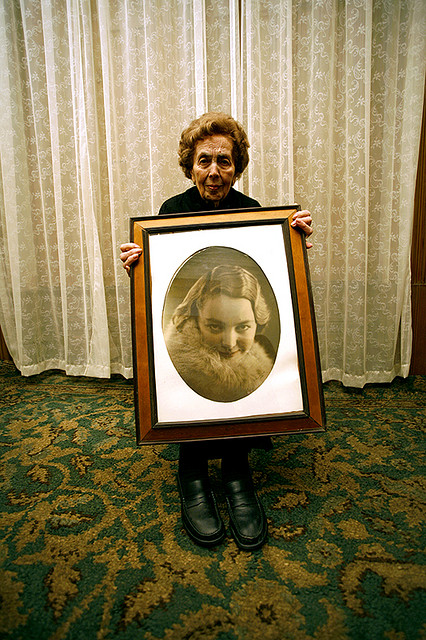
![photo[3]](https://julijasukys.com/wp-content/uploads/2014/02/photo3.jpg)
